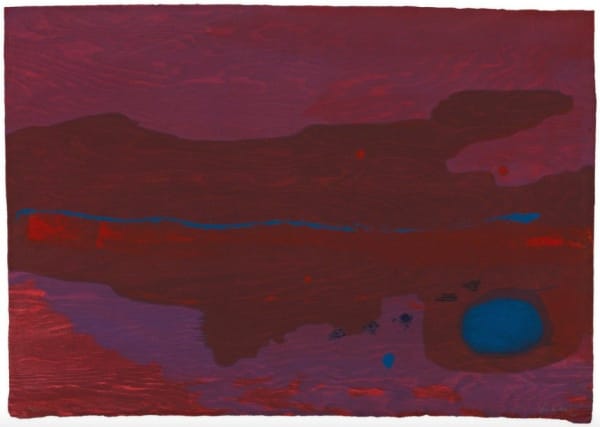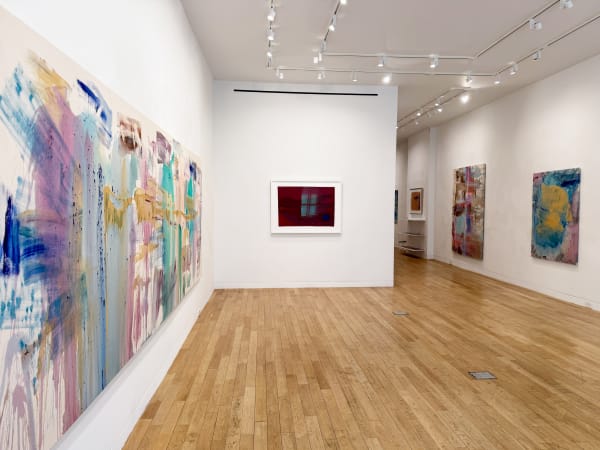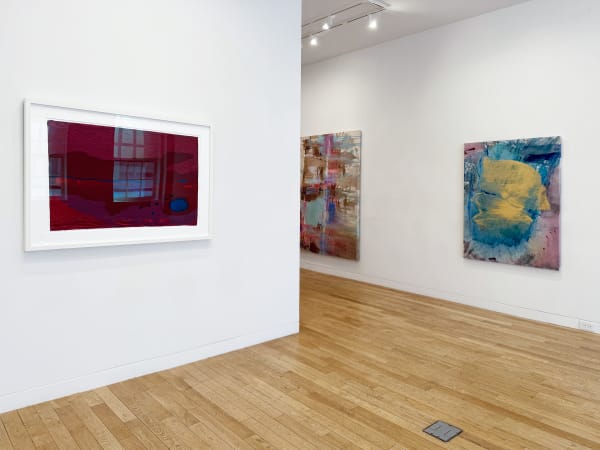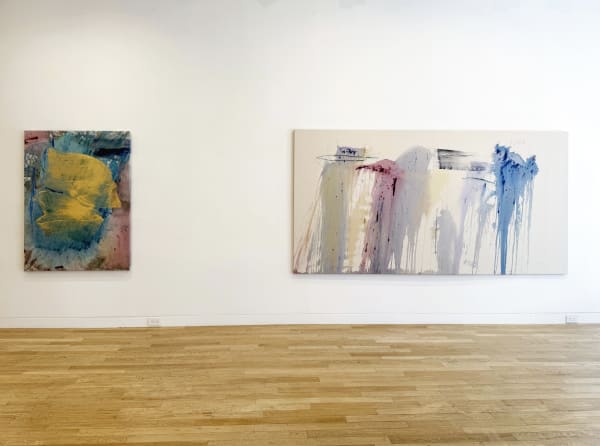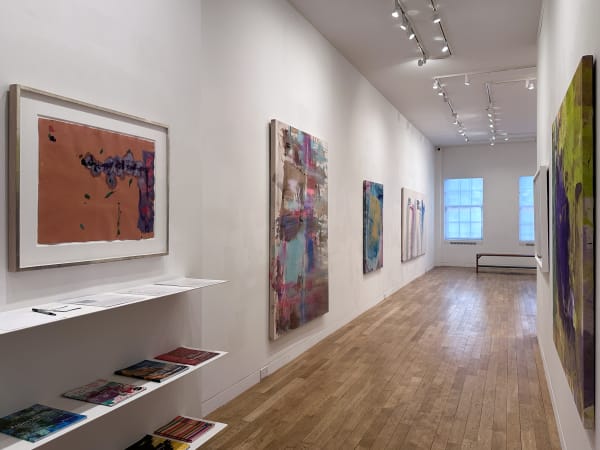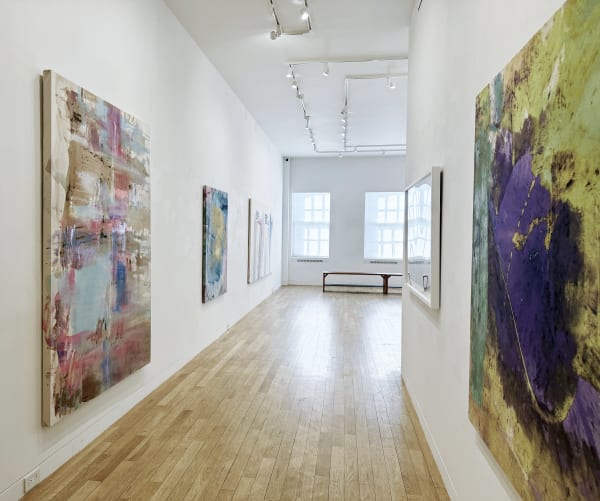Francine Tint: In Dialogue with Helen Frankenthaler
-
 Francine Tint, Heartbeat, 2024
Francine Tint, Heartbeat, 2024 -
 Helen Frankenthaler, Japanese Maple, 2005
Helen Frankenthaler, Japanese Maple, 2005 -
 Francine Tint, Between the Temples , 2024
Francine Tint, Between the Temples , 2024 -
 Helen Frankenthaler, Grey Fireworks, 2000
Helen Frankenthaler, Grey Fireworks, 2000 -
 Francine Tint, Resounding Rain, 2024
Francine Tint, Resounding Rain, 2024 -
 Francine Tint, Airlift, 2024
Francine Tint, Airlift, 2024 -
 Francine Tint, Garden Variety, 2024
Francine Tint, Garden Variety, 2024 -
 Francine Tint, Impressions, 2024
Francine Tint, Impressions, 2024 -
 Francine Tint, Golden Flutter, 2024
Francine Tint, Golden Flutter, 2024 -
 Helen Frankenthaler, Against the Rules, 1983
Helen Frankenthaler, Against the Rules, 1983 -
 Francine Tint, Arete, 2024
Francine Tint, Arete, 2024
-

The Brooklyn Rail: Francine Tint: In Dialogue with Helen Frankenthaler
By Alex Grimley 6 November 2024Installation view: Francine Tint: In Dialogue With Helen Frankenthaler, Upsilon Gallery, 2024. Courtesy Upsilon Gallery. The eight paintings Francine Tint is showing at Upsilon represent...Read more -
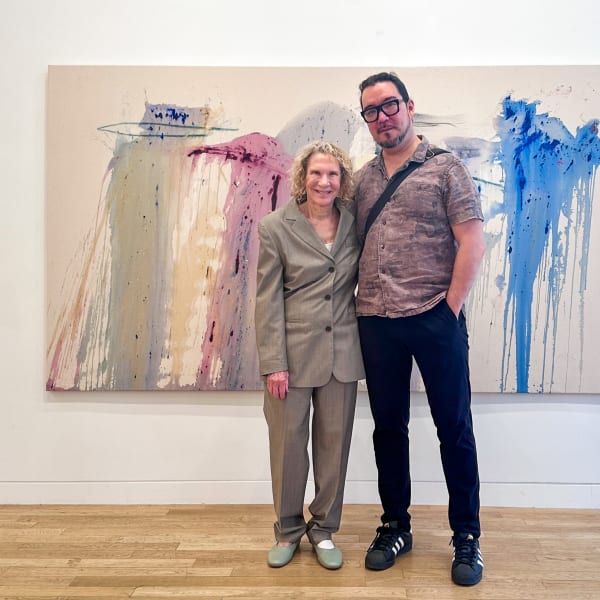
WHITEHOT MAGAZINE: Francine Tint at Upsilon Gallery
By DAVID JAGER 5 November 2024Francine Tint, Airlift 2024, Acrylic on canvas, 57 x 104 courtesy Upsilon Gallery. Francine Tint: In Dialogue with Helen Frankenthaler Upsilon Gallery : 23 E...Read more -

Francine Tint: Interviews from Yale University Radio WYBCX
By Brainard Carey 30 October 2024Francine Tint In the Studio CLICK HERE TO Listen to the Podcast Over more than five decades, Francine Tint has created a remarkable body of...Read more -

Ab Ex lives
The New Criterion by Dana Gordon 23 October 2024On “Life in Action,” recent paintings by Francine Tint at the National Arts Club. The Abstract Expressionist revolution in painting occurred from the mid-1940s to...Read more -
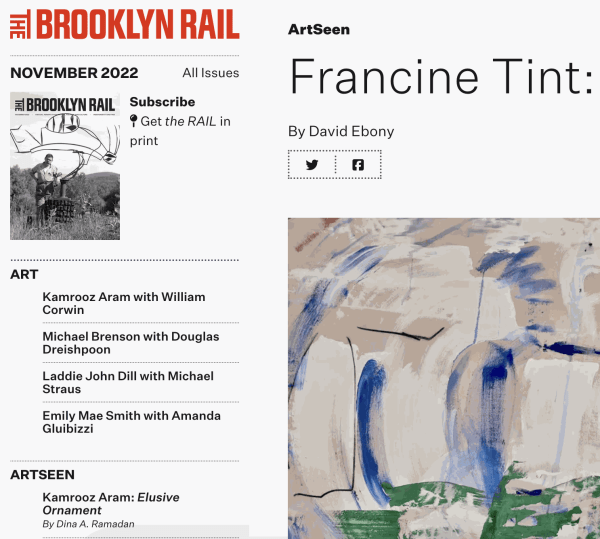
Francine Tint: Life in Action
The Brooklyn Rail by David Ebony 23 October 2024The work of veteran New York abstractionist Francine Tint was championed by uber-critic Clement Greenberg late in his career, and early in hers. Tint’s work...Read more
Over more than five decades, Francine Tint has created a remarkable body of work. Her paintings display an exhilarating freedom of execution combined with an original and frequently surprising color sensibility, varying in size from 10 inches to nearly 20 feet. Her brushwork ranges from languorous and undulating swaths of paint to aggressive and agitated gestures. Her works speak of a powerful and unwavering commitment to the visual and emotional vocabulary of abstract painting, and they embody the artist's personal and deeply held belief in the power of intuitive creation.
Tint's direct heritage may be traced to Abstract Expressionism and Color Field painting. Her admiration for those artists is enormous, but she also reaches more deeply into art history. Artists who are touchstones for Tint include Édouard Manet, Francisco Goya, Pompeian frescoes from the Roman Empire, and especially J.M.W Turner for his reliance on inspiration and radical painting techniques. She is particularly fond of 16th-century Mannerist painters; Jacopo Pontormo's idiosyncratic colors and anatomical and spatial distortions fascinate Tint. She also has a deep interest in Asian brush paintings. Recently, Tint has been mining her books on paleolithic cave paintings where she is captivated by their creators' profound identification with the animals they depicted, an identification which extends to handprints stenciled directly onto the cave walls. She is reminded of the foot and handprints that appear in her paintings.
Tint has pronounced, "I try not to think but to respond with immediacy and all possible speed to my colors and painterly materials." In Tint's words, her paintings express "the now." She is fond of quoting Jules Olitski's pronouncement made at age 81, "I guess I expect miracles to happen." However, when Tint says, "I try not to think," she means not to "overthink" the works. In fact, each of her brush marks is implanted with 50 years of painting experience in a myriad of modes. These brushstrokes contain Tint's feelings, her knowledge of art history, and her direct response to the other paintings in the studio. Tint's works express her steadfast faith in the expressive power of abstract painting. In an expression that has been much revered in the history of art, Francine Tint "is a painter's painter."
Tint has deep respect for Helen Frankenthaler’s art and recognizes common aspects of their practice. However, unlike Tint’s layering of instinctive paint gestures, Frankenthaler arranges her color areas frontally with minimal layering. Within this format, her planes of color fall into three broad relationships; they separate, touch, or overlap. Frankenthaler’s gestural marks also run parallel to the picture surface and thus despite their widely different characters correlate with each other. For Frankenthaler, the symmetrical and non-symmetrical aspects of a composition are carefully determined.
Robert S. Mattison
Marshall R. Metzgar Professor of Art History
Emeritus
LafayetteCollege
For additional information and inquiries, please contact:
Soojin Patterson
Director
(646) 476-4190
Soojin@upsilongallery.com
NEW YORK, NY - Upsilon Gallery is pleased to present Francine Tint: In Dialogue with Helen Frankenthaler, a debut of new fresh works by Francine Tint with three small works by Helen Frankenthaler.

